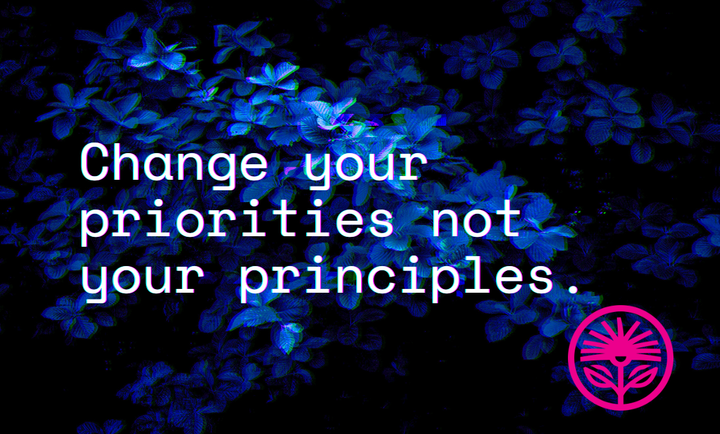The condition of your position — Kelford Labs Weekly
Common positioning mistakes.


“There seems to be an almost religious belief that the wider net catches more customers, in spite of many examples to the contrary.”
— Jack Trout & Al Ries, The 22 Immutable Laws of Marketing
A marketing position is meant to be constraining—it’s meant to inhibit certain actions and decisions that might take you off course.
The whole idea of a marketing position is that it’s specific and focused. Otherwise, it’s just a wishlist or a vague aspiration.
Over the years and across the hundreds of positions we’ve assessed or created, we’ve identified some common missteps that can reduce the focus, clarity, and effectiveness of a position.
So let’s go through the components of a marketing position (Who, What, How, When, Where) and discuss the ideal approach, the most common mistakes we see, and a few helpful tips for improving and refining.
Who are your ideal customers?
The Ideal: This is a specific, focused description of a customer type that is both financially and emotionally profitable. They add more value to your business—and your enthusiasm to do your work—than they take.
The Mistake: Going too broad, and looking for a “total addressable market”—which is larger than you can serve and will only dilute your ability to demonstrate your value. Instead, you want a “total demonstrable market”—a small, focused group of buyers to whom you can effectively demonstrate the tradeoffs you’ve made to serve them best. The more people you try to address in your position, the harder a time you’ll have actually addressing them.
The Next Step: Look for every “And” in your position—every time you add to your position to attract a different customer, you detract from your overall value. Demonstration is about tradeoffs, not variety.
What do they need?
The Ideal: This is a statement, in your clients’ own words, about what they need from a provider like you. It’s not “confidence,” “clarity,” or any other vague, inspirational word. It’s something clear, specific, and urgent.
The Mistake: Not listening to your customers and prospects about what they say they need, and instead telling them what you want to say. Your position is not about you—it’s about them. What do they need, and how do they describe it? Our job isn’t to convince or persuade, it’s to demonstrate that we have the ideal solution to a problem they have—which means we need to understand their problem the way they do.
The Next Step: Have, as Mary Wells Lawrence put it, the “nosiness of a detective” to find out what your best prospects and customers say about their needs, desires, and sense of urgency about the type of work you do. Positioning, as Jack Trout and Al Ries wrote, “is usually found in the prospect’s mind, not in the product.”
How do you uniquely help?
The Ideal: This is a clear, specific articulation of the tradeoffs you’ve made to best serve your specific customer group, not a recitation of all the possible things you could do for them. It’s the one thing you do, better than anyone else.
The Mistake: Thinking that the more you do, the more you’ll attract. When the opposite is true. The more specific we can be here, the more impact it will have on the prospects who need us. We want to avoid the “buffet problem,” of doing a little bit of everything for everyone. Instead, we want to be laser focused on what we do best for the people who value it most. Nothing more, nothing less.
The Next Step: Re-read your marketing position and ask yourself: Is it obvious from this what we don’t do? If not, you’re not specific enough about what you do do.
When do they need you?
The Ideal: This should be a specific time of the day, time of the year, stage of life, or business circumstance where a need for your type of work arises. It’s the “struggling moment,” in Bob Moesta’s words, that your customers experience that creates demand for your business.
The Mistake: Believing that it’s always a good time to buy from you. When, in fact, there’s a specific time in the customer’s life or stage of business when they need you in particular, when you’re best suited to help. We want them to hear or see our messages immediately before they have a need, so that as soon as they need us, they already know we can help.
The Next Step: Ask your best customers what happened right before they realized they needed to seek out services or products like yours. What time was it? What day was it? What season was it? What happened, and what clicked that made them look for support or resources?
Where do they go?
The Ideal: This is a short list of the places—physical or digital—that your best prospects go when they start looking for support, services, or products like yours.
The Mistake: Casting a wide net, and trying to be everywhere all at once. “You can’t chop a tree in two by hitting every time in a different place,” as Claude C. Hopkins wrote. You need to focus your energy, money, and other resources on the places you can have an outsized impact.
The Next Step: Keep a list of your referral sources—both personal and digital—and refine and focus the list until you know the specific places your best prospects are likely to go next when they need a business like yours.
Less precious, more focused
In a changing world, no position is ever permanently fixed. It is a living, changing, adapting entity—something you want to constantly refine and focus.
So don’t be precious about your position, because your customers aren’t precious about you. They’re precious about their problem.
Which means we need to know who those customers are, how they describe that problem, how you can help them in your unique way, when they have the problem, and where they go for help.
So you can be there.
The right way, with the right words, at the right time.
Kelford Inc. helps hands-on entrepreneurs and founders with complex marketing challenges define and articulate their unique value to their very best customers.
We’ll show you the way to always knowing what to say.



